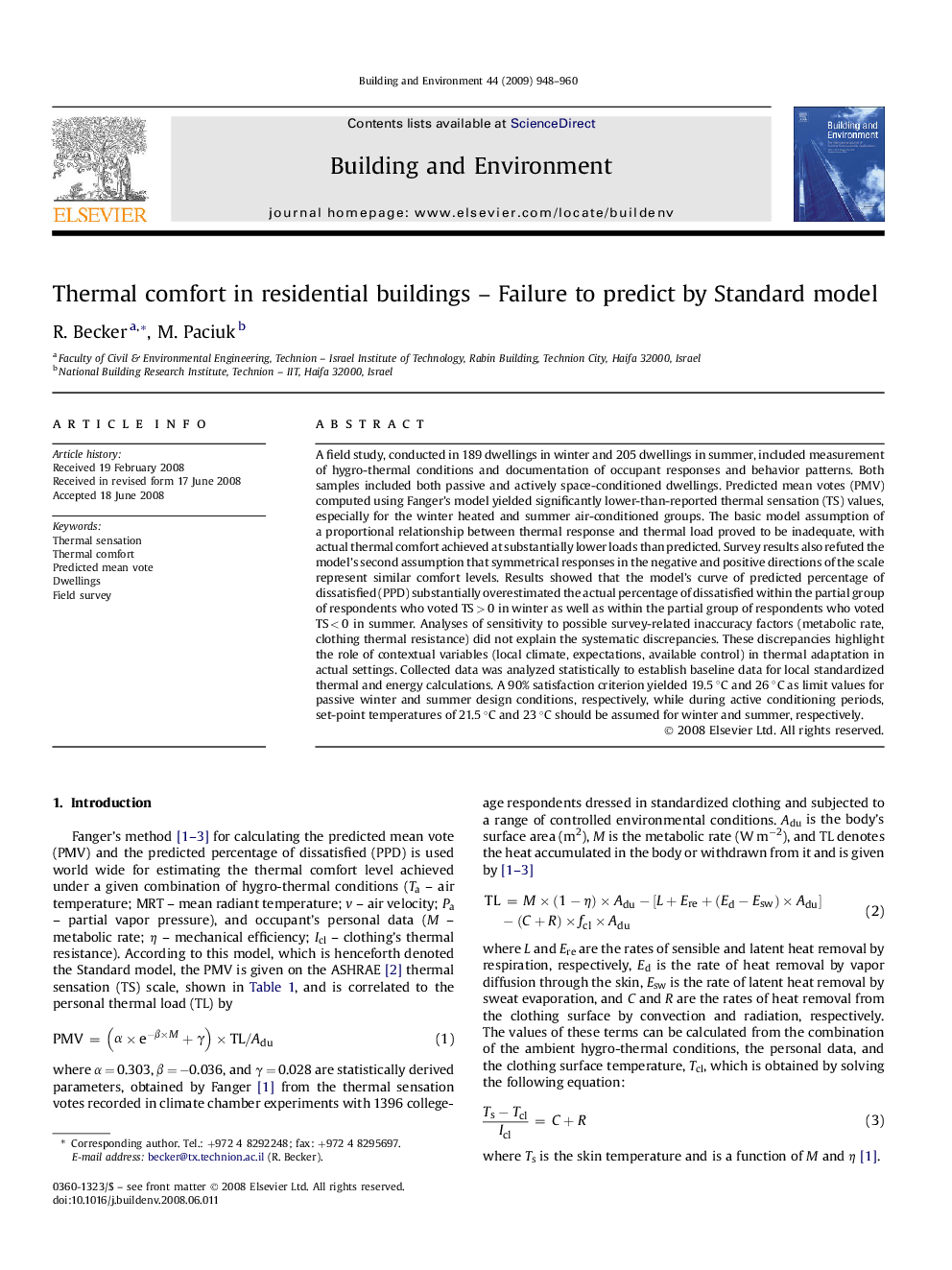| کد مقاله | کد نشریه | سال انتشار | مقاله انگلیسی | نسخه تمام متن |
|---|---|---|---|---|
| 249484 | 502611 | 2009 | 13 صفحه PDF | دانلود رایگان |

A field study, conducted in 189 dwellings in winter and 205 dwellings in summer, included measurement of hygro-thermal conditions and documentation of occupant responses and behavior patterns. Both samples included both passive and actively space-conditioned dwellings. Predicted mean votes (PMV) computed using Fanger's model yielded significantly lower-than-reported thermal sensation (TS) values, especially for the winter heated and summer air-conditioned groups. The basic model assumption of a proportional relationship between thermal response and thermal load proved to be inadequate, with actual thermal comfort achieved at substantially lower loads than predicted. Survey results also refuted the model's second assumption that symmetrical responses in the negative and positive directions of the scale represent similar comfort levels. Results showed that the model's curve of predicted percentage of dissatisfied (PPD) substantially overestimated the actual percentage of dissatisfied within the partial group of respondents who voted TS > 0 in winter as well as within the partial group of respondents who voted TS < 0 in summer. Analyses of sensitivity to possible survey-related inaccuracy factors (metabolic rate, clothing thermal resistance) did not explain the systematic discrepancies. These discrepancies highlight the role of contextual variables (local climate, expectations, available control) in thermal adaptation in actual settings. Collected data was analyzed statistically to establish baseline data for local standardized thermal and energy calculations. A 90% satisfaction criterion yielded 19.5 °C and 26 °C as limit values for passive winter and summer design conditions, respectively, while during active conditioning periods, set-point temperatures of 21.5 °C and 23 °C should be assumed for winter and summer, respectively.
Journal: Building and Environment - Volume 44, Issue 5, May 2009, Pages 948–960